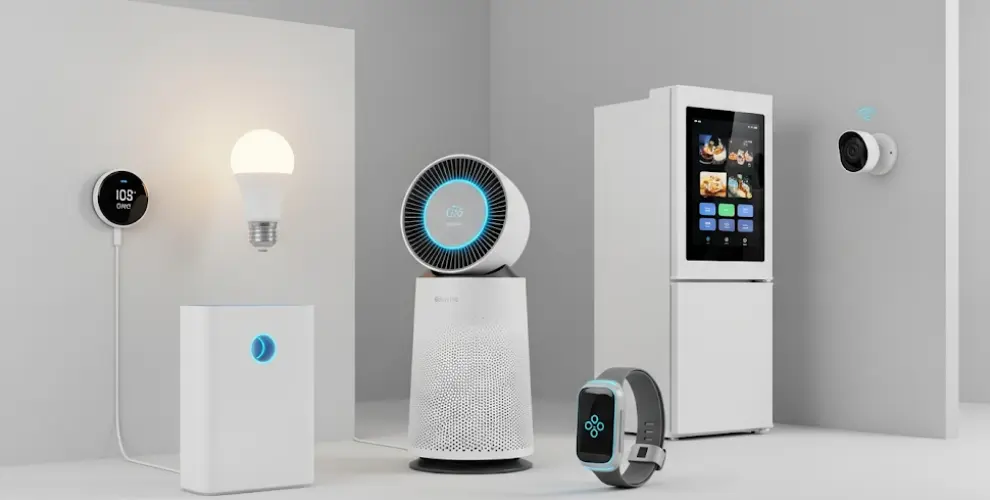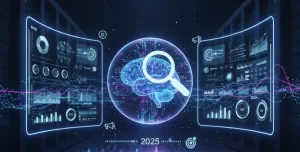
Top 10 Must-Have IoT Products in 2025
Table of Contents
Introduction
Welcome to WikiGlitz!
We’ve brought you this amazing blog to explore the top IoT products revolutionizing smart living in 2025.
Whether you’re setting up a smart home, optimizing energy use, or simply seeking convenience, this guide has you covered.
The Internet of Things has evolved from futuristic technology to a daily necessity.
As more homes and cities go smart, IoT products are creating a new standard for convenience, safety, and sustainability.
Whether you’re just beginning your smart tech journey or upgrading your ecosystem, understanding which IoT devices bring real value is crucial.
This year, the focus is on interoperability, AI-driven personalization, and data-driven efficiency.
Let’s explore the top 10 must-have IoT products in 2025, featuring everything from matter smart home devices to intelligent iot sensors and devices.
Key Takeaways
- Explore the most important Internet of Things products transforming smart homes, healthcare, and sustainable living in 2025.
- Understand how Matter IoT devices simplify cross-brand compatibility for smart homes.
- Learn why integrated tools like IoT temperature sensors and IoT device controls improve both comfort and energy management.
1. Smart Thermostats with IoT Temperature Sensors
Smart thermostats have redefined how we manage indoor climate. Thanks to IoT temperature sensors, they now adapt in real time based on occupancy, weather changes, and time of day.
These systems analyze your patterns and adjust settings to save energy while keeping you comfortable.
Real-world impact:
In colder regions like Canada or Germany, these devices can reduce heating costs by up to 20%. When paired with matter smart home products, they also sync effortlessly with your lighting and security settings.
Ideal for: Eco-conscious homeowners and those in fluctuating climates.
2. Matter-Compatible Smart Lights
The era of using multiple apps and complicated integrations is now behind us.
Matter smart home devices, especially smart lighting systems, are changing the game by enabling seamless control across platforms like Google Home, Alexa, and Apple HomeKit.
Why it matters:
You can create mood lighting based on time, activity, or even motion detection. For example, in a UK flat, lights could dim automatically when the TV switches on, thanks to matter IoT devices integration.
Pro tip: Choose smart bulbs with built-in IoT device controls for better automation.
3. Smart Home Hubs with Advanced IoT Device Controls
Think of a smart hub as the brain of your connected home. These devices consolidate control for everything—from lighting and thermostats to cameras and door locks.
Today’s hubs come equipped with advanced IoT device controls and AI features that learn your preferences.
Features to expect:
- Voice and gesture control
- Multi-device automation
- Remote access through encrypted apps
As smart homes grow more complex, hubs simplify life, especially when managing multiple Matter smart home devices.
4. Smart Plugs and Energy Monitors
While they may look simple, smart plugs are powerful tools in managing energy usage.
These compact IoT devices let you switch appliances on/off remotely, monitor energy draw, and automate schedules.
Why it’s essential:
Imagine leaving your curling iron on in Australia. A quick tap on your phone can turn it off instantly, reducing fire risk and saving energy.
Integration Tip: Choose models that support matter IoT devices for better compatibility with your home automation routines.
5. AI-Powered Security Cameras with Smart Sensors
Home security is becoming proactive, not just reactive. Modern IoT sensors and devices integrated into smart cameras detect movement, recognize faces, and even sense unusual activity based on sound.
Use case:
A homeowner in Sweden can receive real-time alerts when someone approaches their property, even differentiating between a delivery person and an intruder.
Why it stands out:
These cameras work in sync with IoT device controls, triggering alarms or lighting when suspicious activity is detected.
6. Smart Door Locks with Multi-Level Access
Security meets convenience with smart locks—a rapidly growing segment of IoT devices for home.
You can now grant access to visitors, housekeepers, or Airbnb guests without needing to hand over a physical key.
Key features:
- Biometric and app-based entry
- Temporary or scheduled access codes
- Auto-lock based on geofencing
Compatibility matters: Look for models that support matter smart home devices for unified home access.
7. Smart Refrigerators with IoT Device Controls
Today’s refrigerator serves as a smart hub in your kitchen. These Internet of Things products now include sensors and devices that monitor expiration dates, recommend recipes, and send reminders for grocery shopping.
Example:
In the UAE, a family can remotely check fridge inventory while at the supermarket, avoiding unnecessary purchases and food waste.
Why it’s evolving:
Smart refrigerators are now connected to temperature sensors, allowing them to maintain precise climate zones tailored to different types of food.
8. Wearable Health Devices
From smartwatches to sleep trackers, wearable IoT devices have become indispensable. They offer real-time health data, monitor chronic conditions, and even detect early symptoms.
Growing importance:
In aging populations across Europe, these wearables sync with healthcare apps, sending alerts to doctors or caregivers in emergencies.
Pro insight:
Though not categorized under IoT devices for home, wearables are crucial in holistic smart living ecosystems.
9. Smart Air Purifiers with Environmental Sensors
Clean air is a rising priority, especially in cities like London or New York. Smart air purifiers use IoT sensors and devices to detect airborne particles, VOCs, and humidity.
How it works:
Based on sensor readings, the purifier adjusts speed and settings automatically. You can monitor air quality trends over time and sync with voice assistants.
Best combined with:
Matter smart home products for scene-based automation (e.g., turn on when pollution exceeds a threshold).
10. Smart Irrigation Systems for Eco-Friendly Landscaping
These IoT products use soil sensors, weather data, and AI algorithms to water your plants just the right amount, saving water and time.
Why it matters in 2025:
With climate change affecting rainfall patterns, especially in countries like Spain and Australia, smart irrigation ensures efficient landscaping.
Top features:
- Remote zone control
- Water usage analytics
- Integration with IoT device controls and garden sensors
Conclusion
As we move further into 2025, the role of IoT products in our daily lives continues to expand.
From managing our energy use to protecting our homes and even monitoring our health, these devices are no longer optional—they’re essential.
With the rise of matter smart home devices, interoperability is becoming less of a barrier, and smart living is now more accessible than ever.
Whether you’re upgrading your security, optimizing energy, or embracing wellness tech, these top 10 IoT devices offer unmatched functionality and value.
Follow WikiGlitz for more such insights into smart technologies, automation trends, and the future of connected living.
Frequently Asked Questions (FAQs)
1. What are IoT products, and how do they work?
IoT products are internet-connected devices that collect, share, and act on data in real-time. They work using sensors, cloud computing, and automation to simplify tasks, improve efficiency, and enhance the user experience in homes, businesses, and daily life.
2. Which are the best IoT devices for home use in 2025?
The best IoT devices for the home in 2025 include smart thermostats, Matter-compatible smart lights, air purifiers, smart door locks, and home security cameras. These devices enhance security, reduce energy usage, and streamline home automation.
3. What does the Matter protocol mean for smart home devices?
Matter is a universal smart home standard that allows different IoT products to work together, regardless of brand. Matter smart home devices ensure seamless connectivity between ecosystems like Google Home, Apple HomeKit, and Amazon Alexa.
4. Are IoT temperature sensors worth installing in a smart home?
Absolutely, temperature sensors in Internet of Things devices are crucial for maintaining climate control, reducing energy consumption, and enhancing overall comfort. They help smart thermostats and other devices make intelligent decisions based on room-specific temperature data.
5. How do I choose the right IoT device for my needs?
Begin by defining your priorities, such as security, energy efficiency, or convenience. Then, choose IoT products that are compatible with your existing setup, support Matter integration, and offer good app support and data security.





